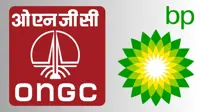Despite some Monsoon revival, sowing worries remain for protein and coarse cereals: Crisil
28 Jul 2014
Till 25 July 2014, monsoon has been 24 p0er cent below the long-period average (LPA) - worse than the deficiency seen in fiscals 2009 or 2012.
While 2009 turned out to be a drought year, the rains recovered sharply in the latter half of the season in 2012.
According to projections by ratings agency Crisil, this year, there is a higher probability of a turnaround – just like in 2012.
Crisil's view is consistent with the IMD forecast of rainfall deficiency to reduce to less than 10 per cent by the end of the season.
But despite the recovery, Crisil projects agriculture growth to remain muted at 1 per cent as a strong statistical base-effect from last year's growth will kick in. That, again, will be a replica of 2012 when food grains production clawed back to above the long-term average, but farm growth came in at a measly 1.4 per cent because the year preceding - 2011 - had seen an above-trend 5 per cent farm growth.
And if monsoon fails to revive in the coming weeks, Crisil's forecasts agriculture growth to decline to 0 per cent, shaving off an additional 30 basis points from our base-case GDP growth forecast of 5.5 per cent.
CRISIL's Deficient Rainfall Impact Parameter -- or DRIP - which is computed as a product of the percentage deviation of rainfall and percentage of unirrigated area, captures both magnitude of the shock (measured as the deficiency of rainfall) as well as the vulnerability of a region (measured as a percentage of unirrigated area).
State DRIP scores show Maharashtra, Gujarat and Rajasthan are the worst-hit. These states have a large share of the production of coarse cereals (jowar, bajra), pulses (tur) and oilseeds (groundnut, soybean).
Crop-wise DRIP scores indicate that coarse cereals (jowar, bajra) oilseeds (groundnut, soybean), cotton and pulses (tur or arhar) are twice as worse off as in fiscal 2009 due to deficient rains in Maharashtra, Gujarat and Rajasthan.
Rice, however, has been impacted lower than in 2009 because of lower rainfall deficiency in the north-east, which accounts for around 30 per cent of India's rice production.
Overall sowing, at 24 per cent below normal till 25 July, is far behind schedule and worse than in 2009. For rice, it is 16 per cent below normal, for coarse cereals 43 per cent and for pulses 33 per cent.
Although some damage to sowing has already been done, Crisil projects the situation will not be as dire as in 2009.
"Historically it has been observed that in three of the last five fiscals -- 2009, 2010 and 2012 -- sowing was well behind schedule. But in both 2010 and 2012, it recovered fully with the rains," Crisil says.
"Therefore, the odds of a recovery are still favourable -- at 2 in 3".
However, according to Crisil, the good news is that the most-affected crops have a low weight of 4.3 per cent -- in headline consumer price index.
Moreover, government measures, such as a lower rise in minimum support price or MSP this year and ample buffer stocks, and a favourable base-effect will keep the lid on food grain inflation.
But elevated prices of fruits and vegetables could play spoilsport, it says.
.webp)



.webp)


.webp)

























